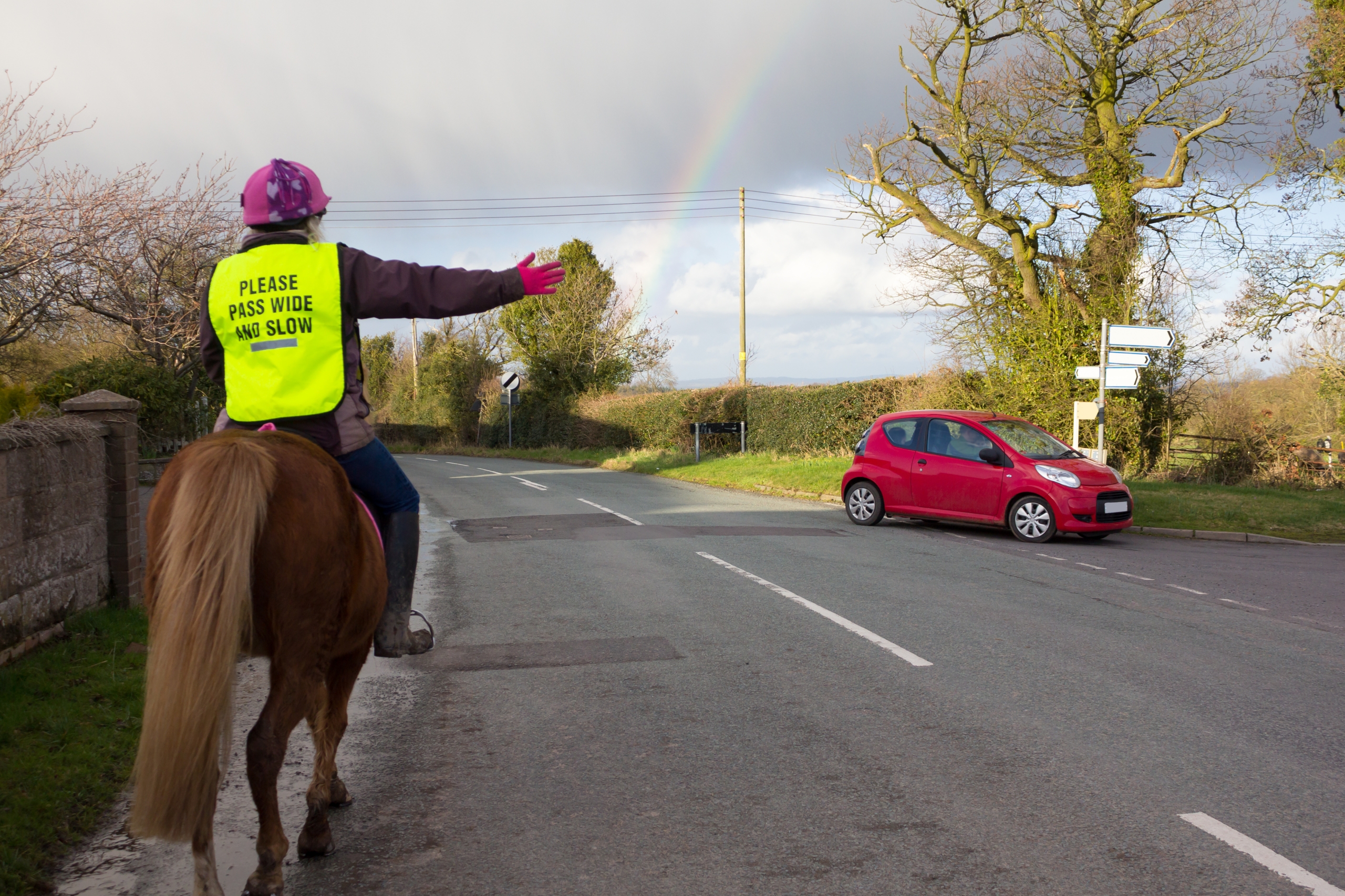OLS Solicitors Blog
Riding A Horse On UK Roads: What You Need to Know

Introduction
Riding a horse on UK roads can be a rewarding experience, offering both horse and rider a chance to explore new environments and build confidence. However, it comes with its own set of challenges and responsibilities. Ensuring the safety of both the rider and other road users is paramount. In this blog post, we’ll cover essential tips and regulations for riding on UK roads, helping you navigate safely and legally.
-
Understanding the Highway Code
Familiarise yourself with the sections of the Highway Code that pertain to horse riders.
What You Need to Know:
The Highway Code includes specific rules for horse riders to ensure safety on the roads. Key points include:
– Always ride with other road users in mind.
– Keep to the left-hand side of the road.
– Wear a hat that conforms to current safety standards.
– Use hand signals to indicate your intentions.
– Do not ride on footpaths or pavements.
Understanding these rules helps you to be a responsible road user and enhances your safety.
-
Visibility is Key
Make yourself and your horse highly visible.
What You Need to Know:
Visibility is crucial when riding on roads. Wear high-visibility clothing and equipment, especially in low light or poor weather conditions. Reflective gear for both horse and rider can make a significant difference. Consider using lights, such as flashing or static LED lights, to further enhance visibility.
Being highly visible reduces the risk of accidents by ensuring other road users can see you from a distance.
-
Proper Equipment
Ensure you and your horse are properly equipped for road riding.
What You Need to Know:
In addition to high-visibility gear, using appropriate equipment is essential. This includes:
– A well-fitting, high-quality riding helmet.
– Reflective leg bands for the horse.
– A reflective breastplate or bridle bands.
– Safety stirrups or quick-release stirrup irons.
– Consider using a neck strap for added control.
Proper equipment helps in managing the horse effectively and ensures both rider and horse are prepared for various road conditions.
-
Road Etiquette
Practice good road etiquette to promote harmony with other road users.
What You Need to Know:
Good road manners are essential for safety and positive interactions. Key aspects include:
– Riding in single file on busy or narrow roads.
– Using clear hand signals for turning or stopping.
– Thanking drivers who slow down or give way.
– Avoiding sudden movements that could startle the horse.
Practicing good road etiquette fosters mutual respect between horse riders and other road users, making the experience safer for everyone.
-
Training and Confidence
Ensure both you and your horse are confident and well-trained for road riding.
What You Need to Know:
Confidence and training are critical for safe road riding. Steps to take include:
– Gradual exposure to road environments, starting with quiet roads.
– Training the horse to be desensitised to common road hazards, such as vehicles, cyclists, and pedestrians.
– Taking a riding road safety course, such as those offered by the British Horse Society (BHS).
Proper training ensures that both rider and horse can handle road situations calmly and safely.
-
Emergency Preparedness
Be prepared for emergencies and know how to react.
What You Need to Know:
Preparation for emergencies is a must. Tips include:
– Carrying a mobile phone with emergency contacts.
– Knowing the location of the nearest veterinary services.
– Carrying basic first-aid supplies for both horse and rider.
– Wearing a medical bracelet if you have specific health conditions.
Being prepared for emergencies can mitigate the impact of accidents and ensure prompt assistance if needed.
-
Dealing with Difficult Car Drivers
Stay calm and composed when encountering difficult car drivers.
What You Need to Know:
Unfortunately, not all drivers are considerate of horse riders. When encountering aggressive or impatient drivers, it’s crucial to remain calm and composed. Avoid escalating the situation; instead, signal for them to slow down or stop if necessary. If a driver becomes confrontational, try to move your horse to a safe area off the road. Report the incident to local authorities, providing as much detail as possible, including the vehicle’s registration number. Wearing a helmet camera can help document these encounters for future reference.
Dealing calmly with difficult drivers helps prevent dangerous situations and ensures the safety of both horse and rider.
-
The Legal Right to Ride on Roads
Know your legal rights as a horse rider on UK roads.
What You Need to Know:
In the UK, horse riders have the legal right to use public roads. This is established under common law, which recognises horse riders as legitimate road users. However, this right comes with the responsibility to adhere to the Highway Code and to ride in a manner that ensures the safety of all road users. While there is no legal requirement for insurance, having third-party liability insurance is strongly recommended to cover any potential accidents or damages.
Understanding your legal rights ensures you ride with confidence and responsibility, contributing to safer and more respectful interactions with other road users.
-
Legal Requirements
Comply with all legal requirements for riding on roads.
What You Need to Know:
While there are no legal requirements for horse riders to have insurance, it is highly recommended to have third-party liability insurance. This protects you in case of an accident involving other road users. Additionally, adhering to the Highway Code and local by-laws is mandatory.
Compliance with legal requirements not only ensures your safety but also protects you from potential legal liabilities.
Conclusion
Riding on UK roads requires careful preparation, adherence to safety practices, and a thorough understanding of road regulations. By being visible, using proper equipment, practicing good road etiquette, ensuring confidence through training, preparing for emergencies, dealing effectively with difficult drivers, and knowing your legal rights, you can enjoy safe and rewarding rides.
Remember, your safety and the safety of others on the road are paramount. Happy and safe riding!

